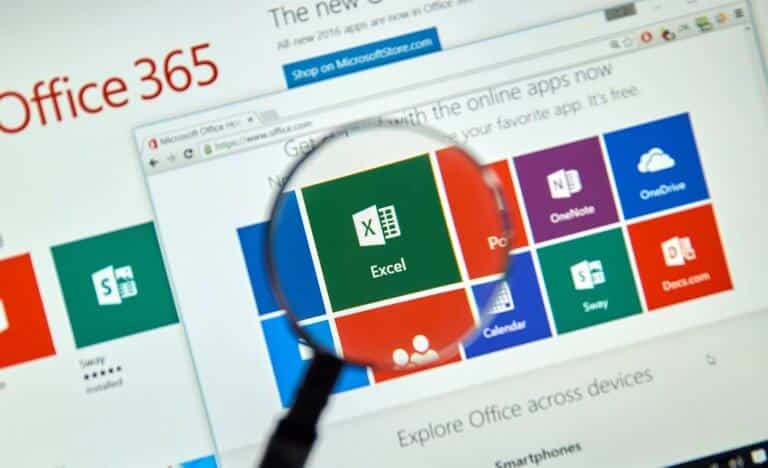The scheduled, periodic and agile interaction between managers and teams significantly improves Human Capital management. At the same time, it enhances the professional development of talent, and reinforces the strategies to retain it in the long term. All of which translates into increased competitiveness and a successful positioning in the market.
Human Capital is one of the fundamental pillars to guarantee the efficiency and competitiveness of any company or organization. However, this premise is not just about hiring or retaining the best talent available on the market. It is also necessary to challenge him, motivate him, earn his trust, transmit enthusiasm, empower him, and make him an active participant in success and joint development.
To achieve this objective, it is necessary for the directive or managerial leadership to maintain effective communication with all their teams. However, in the context of cultural change in the world of work today, this means going much further than just passing on instructions.
Represents the need to maintain continuous feedback with each of the collaborators, in such a way as to know in detail their thoughts, concerns, needs and aspirations, to apply them in daily work.
Only in this way, the whole team could achieve the overall goals. At the same time, it will be possible to have a tool that recognizes and addresses, in a constructive way, the strengths and weaknesses of each team member.
The experts in talent management reiterate that Human Capital is an asset that is as or more valuable than productive infrastructure or technological equipment. Consequently, as such, it must be constantly cared and improved.
For this reason, organizations need a mechanism through which their employees are aware of how they do their work, as well as the improvements they can implement, in order to carry out successful tasks.
Eventually, in a medium or small organization, the managers or heads of the areas can assume these tasks, personally. Constantly visiting the different units, or going to the field, if it is necessary, to supervise critical tasks. Although the disadvantage of this strategy is that, a lot of managerial time would be lost. A valuable time for other equally important tasks within the organization.
However, what happens, for example, with a multinational company, which has thousands of workers in multiple locations, or in different regions or countries? Would they have time or availability to carry out this task “on site”, permanently?
It is necessary, therefore, to design, develop and implement specific tools that transform continuous feedback into a common practice, which does not depend on face-to-face visits from leaders. We could done it, for example, through employee surveys, and applied them online according on regular basis.
This last characteristic is essential, because all efficient feedback implies carrying out cyclical work, although not necessarily linear. These cycles ensure that the content of the process is properly absorbed, implemented and internalized by all its participants.
Premise that it has also been very successful in the sports world, because thanks to continuous feedback, athletes remember all the challenges they have faced previously, as well as the tactics they have applied and must apply in the future, to be always successful.
MODEL AND SYSTEM
The most successful continuous feedback model is the “Deming Cycle”, which was developed by Dr. Edwards Deming in the 1950s.
This is based on four specific attributes:
To Plan: All good feedback should be based on facts and statistics, and not on memories of experiences between the team and their leadership. Therefore, as a first step, it is necessary to identify and understand where the problem is, or the characteristics that we expect to improve.
Once this information is collected, we must explore and define the type of feedback necessary. And then generate the correspondent ideas to achieve the respective feedback. Only when we have this accurate base of action, the expected changes will occur.
To do: Once we identified the strengths and weaknesses of the collaborators, we can check the correct functioning of the feedback system, through the application of a small-scale pilot project. This will allow us to verify, with a minimum of interruptions, if the proposed changes will achieve the desired result.
To check: At this stage, we should analyze if the results of the pilot project has a coherent relation with the previously defined expectations. If they are consistent with reality, then it is the right time to implement the plan on the entire organization. A step that we should take only when there is full awareness that everything will work correctly.
To act: At this point, we implement the process, always keeping in mind that it is a continuous and non-linear action. This means that, from that moment on, the process acquires a dynamic character, continually improving the whole organization, from its own application in equal intervals.
PILLAR OF CULTURAL TRANSFORMATION
In order to optimize the management of human capital, continuous feedback is an indispensable ally to face successfully the current cultural evolution of the world of work.
We can understand this value from the need to retain talent within organizations. Talent that is becoming increasingly difficult to recruit, and that can quickly be lost, if we do not constantly challenge our collaborators to improve themselves, and grow professionally.
The lack of motivation and opportunities to develop and actively contribute to organizational success is a problem that is becoming critical today, causing very high rates of resignations. Even in teams that are just forming. In this risky environment, continuous feedback emerges as the ideal response to achieve greater employee commitment.
The key lies in designing, based on this continuous feedback, actions that allow recognizing the individual or collective talent of human capital, rewarding it, encouraging it, opening spaces for proactive collaboration, and making it feel, ultimately, a valuable part of the organization.
These are the actions that Human Resources leaders must apply, in order to implement a constant improvement in their management. Scenario where continuous feedback provides a unique opportunity to understand measure and take advantage of the concerns or aspirations of the workforce.
For this, it is essential to work according to the following principles:
– Do not generate fear
Continuous feedback is not a threat to workers or their sources of employment; and you have to make an effort so they understand it accordingly. It is not a question of “accusing” mistakes or “look for who we can blame” for certain failures. On the contrary, it is a valuable opportunity to help both employees and the organization to improve their joint management.
– Feedback more frequently:
We must work on the basis that a short and continuous cycle will revitalize the workforce. There is nothing worse than doing satisfaction surveys, for example, and having workers wait for months, or years, before they even have a single notice of a positive result of their participation.
Giving the process agility will also contribute to achieve more motivation, improve performance and forge a better path to achieve long-term goals.
– Eliminate all bias or discrimination:
Any bad influence by issues of gender, ethnic origin, sexual orientation or even past experiences with an employee or team, will hinder the correct flow of feedback, and will render the whole process useless. Any conclusions based on subjective memories of managers must also be set aside. The result must based only on relevant facts, statistics and attributes.
– Managers must be “coaches”:
Every managerial leader must be aware that the objective of continuous feedback is to help the improvement of his collaborators. To do this, it is essential that they think and act like a coach. That means, they always be oriented to the good of the whole team, and not to their personal benefit.
Likewise, the manager must understand that continuous feedback is the common denominator between him and his workers. From that base, he must constantly improve the necessary skills to be “a good coach”. In other words, a coach capable of guiding and motivating the team to do its job better.
Among these skills, agility to provide quick feedback stands out. If managers learn to give feedback in real time, it is easier for employees to implement their findings, both in day-to-day work and in strategic goals.
BENEFITS OF CONTINUOUS FEEDBACK
Defining the methodological and operational steps of this process, within the company, is only part of the task. At the same time, it is necessary to establish a “culture of continuous organizational feedback”. In this way, managers and team leaders should act within the same frequency, in order not generate communication errors due to personal or individual misinterpretations.
In addition, the company leadership must understand that, as in any positive dialogue, employees also contribute to a better continuous feedback with their own vision and opinion. This helps to better identify potential problems. Consequently, it would be possible to generate faster and more effective responses for each of them.
By properly forging all the links in this great positive chain, the company will gain the following benefits from continuous feedback:
– Create a healthy company culture in the workplace: Employees will be more willing to discuss their strengths and weaknesses on a regular basis. This will help them to enhance their professional development and, at the same time, will install an adequate culture of learning and continuous development within the organization.
– Helps employees and the organization to establish better goals: According to recent studies, the companies that establish quarterly goals, based on their continuous feedback processes, generate 30 to 35% more better results than organizations that establish goals annual review.
– Increase in morale: When workers feel heard by their leaders, they are more confident that their feedback is valuable for the whole company. This translates into increased self-esteem, motivation and personal responsibility towards the organization.
– Customer appreciation: Continuous feedback should not be limited to internal improvement only. The company leadership must allow to customers and consumers to participate in this process, since they are the direct beneficiaries of any institutional improvement.
Similarly, when changes and improvements in systems or processes directly affect customers, the leadership must obtain the accurate feedback from them, before implementing them.







